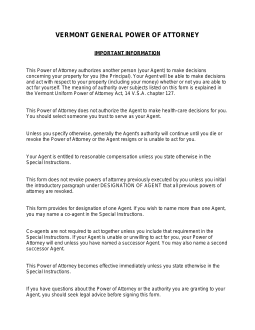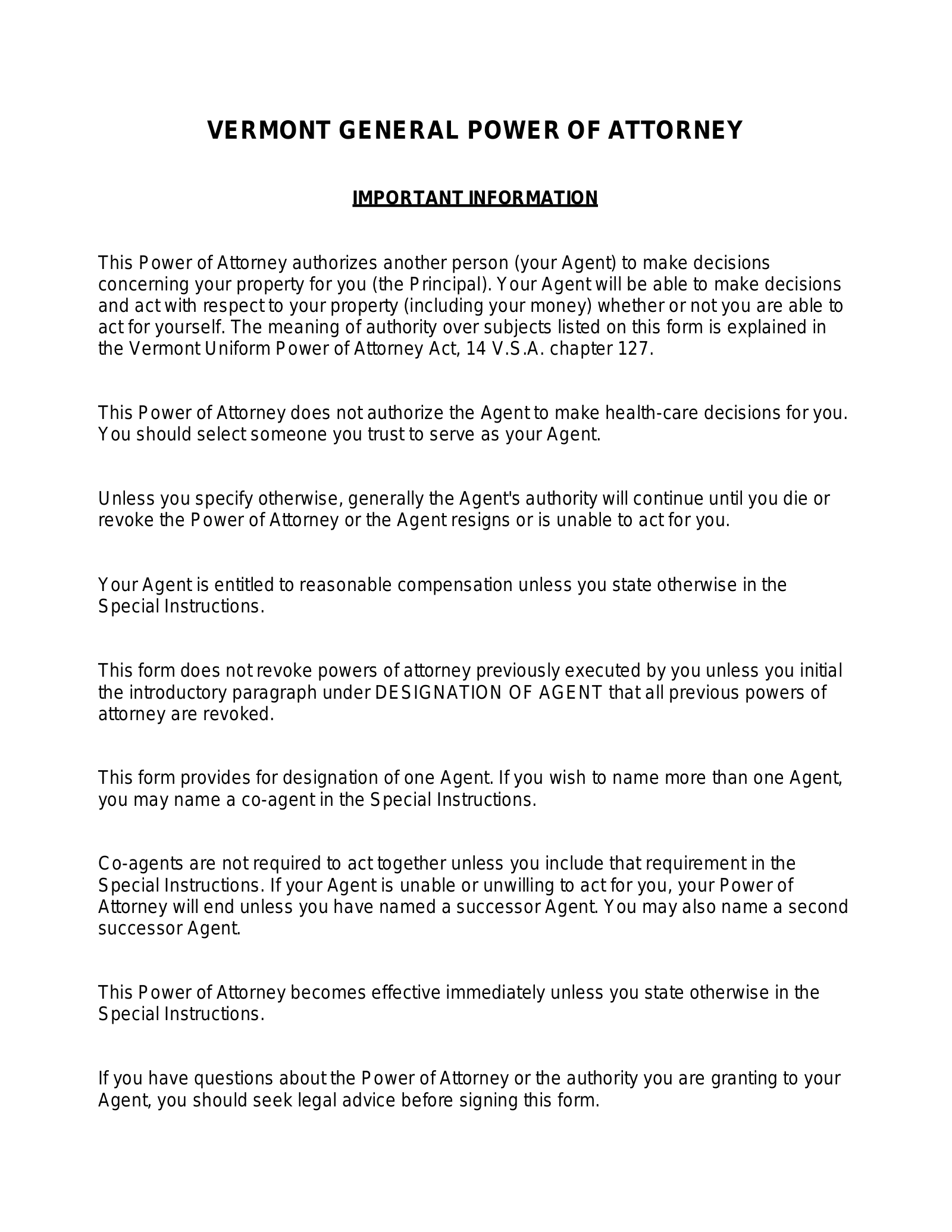Updated July 24, 2023
A Vermont General (Financial) Power of Attorney Form is an instrument for legally appointing someone to handle your financial affairs. This person will be able to represent you by using your name to conduct business because this form shall act as proof that you have approved his or her actions. It goes to follow that you make sure he or she understands your wishes and will accept such responsibilities. It is important to note; this type of delegation will automatically become inactive if you are incapacitated. Some people may wish the appointment to remain in effect despite being incapacitated. Such cases should consider the Vermont durable power of attorney. Otherwise, this paperwork will supply the language necessary to deliver the same authority as a durable appointment.
Laws
- Statutes – Title 14, Chapter 127 – Vermont Uniform Power of Attorney Act
- Authority (14 V.S.A. § 4031) – An agent under a power of attorney may act on behalf of the principal and exercise broad authority as granted by the agreement.
- Signing Requirements (14 V.S.A. § 4005) – Notary Public.


